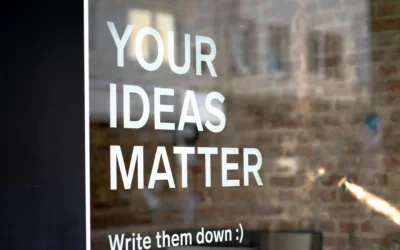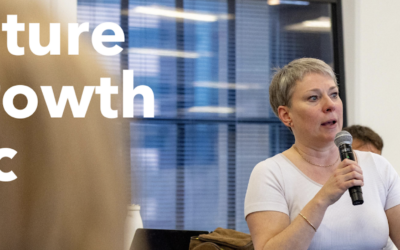Creativity in the workplace is not about a spark of genius. It’s about the willingness to step into the realms of uncertainty, and that inherently makes creativity risky. When people decide to be creative at work, they’re often putting forward ideas that might not work, challenging norms or contradicting traditional views. That’s not a neutral act. It is a risk-taking behaviour. But as a leader, if your objective is for your employees to develop an innovation mind-set and to deliver creative thinking as part of your business growth strategy, that risk-taking act isn’t just desirable, it’s central to achieving competitive advantage (Amabile, 1998).
 Why leadership makes or breaks creativity
Why leadership makes or breaks creativity
Most companies say they want innovation. They ask their teams for fresh thinking, bold ideas and disruptive solutions. But many of those same companies also reward safety, consistency and polish. And when leaders send these mixed signals, people stop taking creative risks. Not because they are lazy or unambitious, but because the costs are too high. In most workplaces, the moment an idea is different, it becomes vulnerable. People ask, “Will I look foolish? Will this be held against me later? Will it slow me down or put my job at risk?”
This is where leadership plays a defining role. Leaders create the conditions that either encourage or suppress risk-taking. And because creativity is a risk, it won’t survive without active and deliberate leadership support. That support involves specific behaviours that make it safer for your teams to try something new, rather than to stay comfortable and do things the same way they’ve previously done them (Hill, Brandeau, Truelove, & Lineback, 2014).
Five ways to lead for creativity and risk-taking
1. Signal permission, not pressure
Make it explicitly safe to try, explore and get things wrong. Don’t just say you want innovation; show that people will not be penalised for experiments that do not land. And create environments where new ideas are welcome, even when they are rough (McKinsey & Company, 2023).
2. Model imperfection and learning
Show that you (also) make mistakes and talk about what you learned. Leaders who share their own failures give others permission to be human. This normalises trial and error as part of progress (Kegan & Lahey, 2009).
3. Shift the focus from outcomes to exploration
When teams are rewarded only for results, they avoid paths with unknown returns. But creativity is not linear, so it’s important to reward the process. Value effort, curiosity and insight, and highlight the value of testing, even when outcomes are uncertain (Amabile, 1998).
4. Protect time and space for creativity
Creativity needs oxygen. When calendars are packed and delivery pressure dominates, creative thinking disappears. Leaders should defend time for thinking, play and experimentation, so that means setting boundaries around schedules and pushing back on unnecessary urgency.
5. Coach curiosity, and don’t manage for answers
Resist the urge to close every loop or demand immediate solutions. People become more creative when leaders value questions over certainty, so provide contexts where insights and questions from experiences can be shared and curiosity is celebrated. This gives you the chance to imagine innovative solutions as a direct result of that creative thinking, so it’s not something that needs neat answers. Dwelling with questions helps generate the innovation mind-set you seek (Edmondson, 1999).
Summing it up
Creativity and risk-taking are not luxuries. They are core to solving complex problems and staying competitive, but they don’t emerge accidentally. Leadership is the switch. Without clear signals and protective behaviours from leadership, you’ll find that the creativity of your teams ultimately gets buried. But with the right kind of leadership, it becomes a powerful source of momentum.
Want to know more? Here’s how we can help.References
Amabile, T. M. (1998). How to kill creativity. Harvard Business Review, 76(5), 76–87. https://hbr.org/1998/09/how-to-kill-creativity
Edmondson, A. (1999). Psychological safety and learning behavior in work teams. Administrative Science Quarterly, 44(2), 350–383. https://doi.org/10.2307/2666999
Hill, L. A., Brandeau, G., Truelove, E., & Lineback, K. (2014). Collective genius: The art and practice of leading innovation. Harvard Business Review Press.
Kegan, R., & Lahey, L. L. (2009). Immunity to change: How to overcome it and unlock the potential in yourself and your organization. Harvard Business Press.
McKinsey & Company. (2023). The state of organizations 2023. https://www.mckinsey.com/capabilities/people-and-organizational-performance/our-insights/the-state-of-organizations-2023



